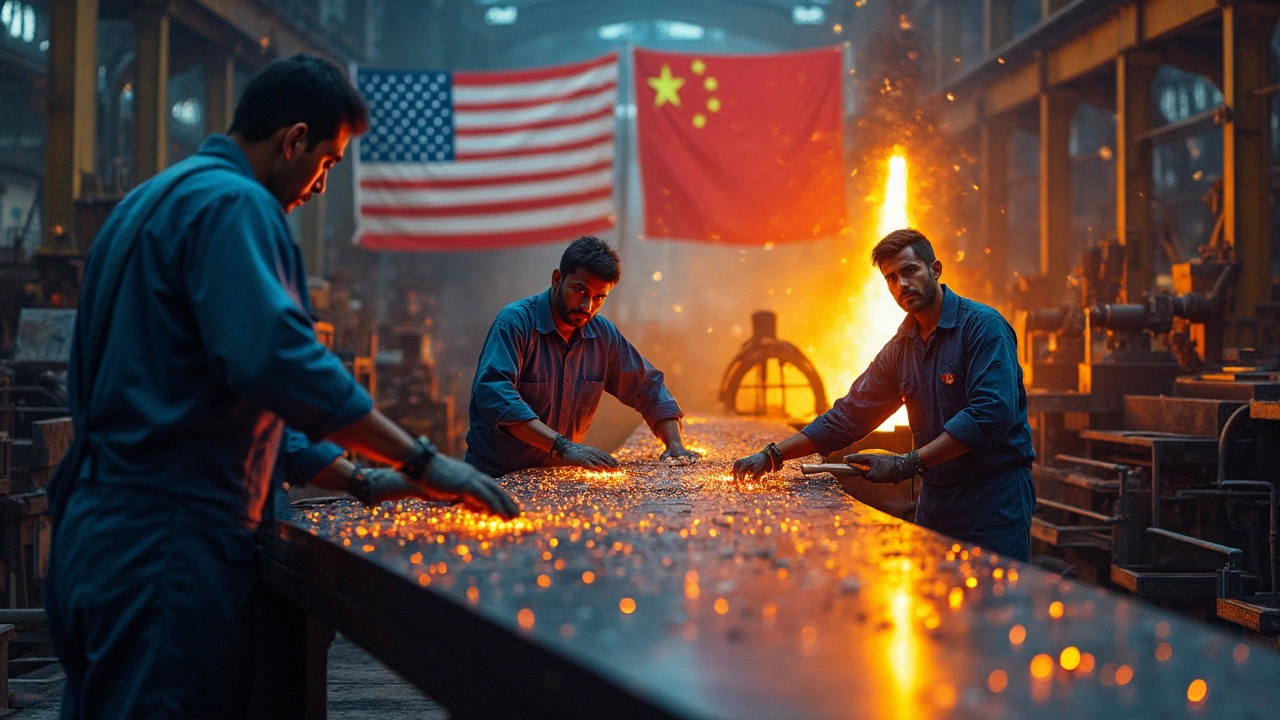- Asia's Largest Earth Moving Equipment Manufacturer: The Big Player in India May 7, 2025
- Top Pharma Plants in India: Leading Manufacturers in 2025 Oct 17, 2025
- Will Companies Pay for Ideas? Manufacturing Startup Insights Jun 3, 2025
- How to Start a Small Scale Industry Successfully Mar 31, 2025
- India's Furniture Manufacturing Industry Set for Growth Dec 10, 2024
Steel Exports: Current Trends and Opportunities
If you’re wondering why steel keeps showing up in news feeds, it’s because the metal drives everything from cars to skyscrapers. Export numbers tell the real story of who’s winning and who’s missing out. In the past year, global demand sharpened, especially in Europe and Southeast Asia, while prices swung up and down with raw material costs. For anyone watching the Indian market, these shifts matter a lot – they affect shipping rates, buyer confidence, and ultimately the bottom line.
Who’s Leading the Global Steel Market?
One name that keeps popping up is the biggest steel supplier in the US. That company not only dominates domestic contracts but also supplies a chunk of overseas orders. Their success comes from a mix of modern mills, efficient logistics, and a focus on high‑strength, low‑weight alloys that ship well. Across the pond, cities like Pittsburgh still hold historic clout. Even though production moved around, Pittsburgh’s legacy and its new tech parks keep it in the conversation about steel output.
Asian players are also reshaping the map. China remains the top producer, but India is catching up fast. Recent government policies have pushed new “PLI” (Production Linked Incentive) schemes that reward exporters with tax breaks and easier loan terms. The result? More Indian firms are setting up dedicated export lines, especially for construction steel used in the Middle East and Africa.
What India Can Do to Boost Its Steel Exports
First off, quality matters more than ever. Buyers now ask for certifications that prove the steel meets international standards. Investing in modern testing labs can turn a small mill into a trusted supplier overnight. Second, keep an eye on logistics. Shipping steel in bulk reduces per‑ton costs, but you also need reliable ports and faster customs clearance. Some Indian exporters are partnering with logistics startups that offer real‑time tracking and bulk discounts.
Third, diversify your market list. Relying only on a single region leaves you vulnerable to trade tariffs or local economic slowdowns. Look at emerging markets in Africa, where infrastructure projects create a steady demand for reinforced steel bars. Finally, use data. Platforms that track global steel prices let you time your shipments for better margins – sell when prices peak, buy raw material when they dip.
In practice, a midsize Indian steel firm recently boosted its export share by 30% by adopting three simple steps: getting ISO 9001 certification, signing a long‑term deal with a port authority for priority docking, and launching an online portal where overseas buyers can request quotes instantly. The move paid off quickly, earning them contracts in the UAE and Kenya.
Bottom line: steel export success isn’t just about having a furnace. It’s about meeting quality standards, managing costs, and staying ahead of market trends. Whether you’re a large producer or a small mill, applying these practical tips can help you move from local sales to a global player.
Keep watching the top supplier news, watch how cities like Pittsburgh evolve, and pay attention to India’s policy shifts. The next big export win could be just around the corner, and being ready will put you in the driver’s seat.
Does China Buy Steel from the US? Shocking Facts Steel Manufacturers Should Know
- Aarav Sekhar
- May 21, 2025
This article digs into whether China, a steel giant, actually buys steel from the US. It unpacks why steel trade flows the way it does, which types of steel get shipped, and how tariffs and politics shape the industry. If you run or work in steel manufacturing, you’ll get practical tips on navigating international markets and what this tension means for your business. Get ready for some myth-busting and practical insights on a topic the news rarely explains clearly.
